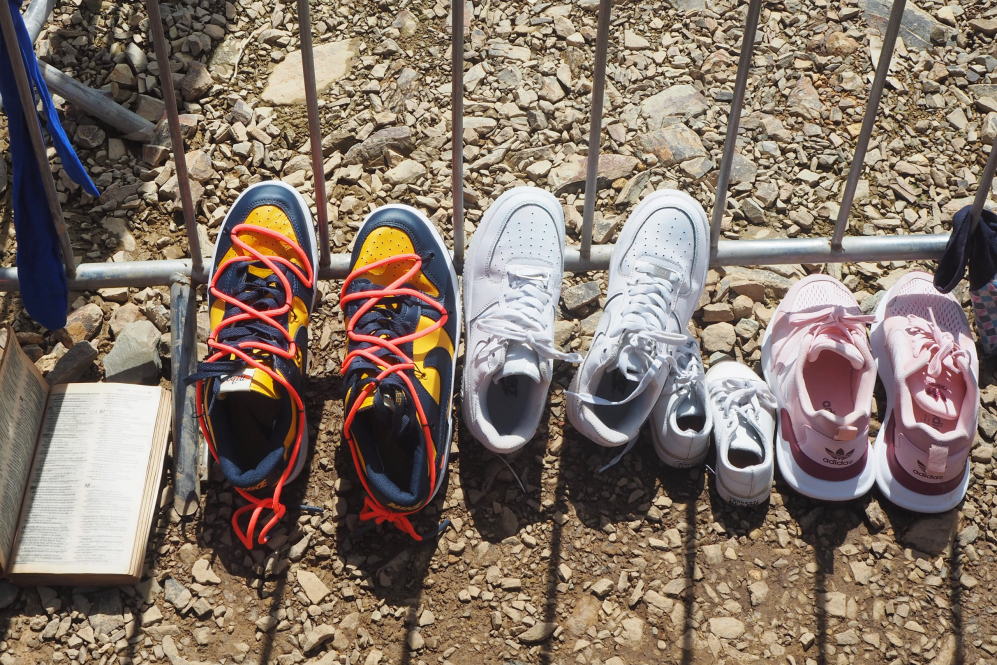This interview is a companion to the exhibition by Madeline Baird hosted in The Dodd Center for Human Rights. In advance of an event celebrating the exhibition on February 1, 2023, Human Rights Institute Director Kathryn Libal discusses with Baird, a doctoral student in UConn’s Department of Anthropology, her ethnographic research and photography on migrant experiences’ en route from Darién, Panama to the U.S.-Mexico border.
Kathryn Libal: Madeline, what led you to research migrant experiences of transit through the Darién Gap? What makes this a critical area to study?
Madeline Baird: In 2021, I began my ethnographic research in Darién, Panama with a group of health researchers from the Gorgas Institute of Health Research in Panama. After five years working in public health in Panama, I was compelled to join this collaboration and examine the health needs and social and political dimensions of a rapid increase of transit migration between Colombia and Panama.
This border space – a 100 kilometer treacherous footpath through the Darién Forest – represents an emerging geopolitical space of transit. In 2022, nearly 250 thousand migrants transited the Darién northward from South America en route northward to the U.S.-Mexico border. Over the last five years, the number of transit migrants passing through Darién has increased by 27 times, up from just over nine thousand in 2018. This research examines the impact of this rapid increase in migration on constructions of human rights for migrants and local communities across this emerging border space in Panama.
Kathryn Libal: What can you tell us about this increase in migration and the experiences of those migrating?
Madeline Baird: A rapid increase in transit migration has also coincided with an increasing proportion of children, women, and elderly migrants that must overcome the physical terrain of the five-day journey crossing rivers and mountains through the tropical forest.
During their journeys, migrants face unimaginable violence and trauma. In our interviews with more than forty migrants transiting Darién, migrants commonly experienced bodily injury, losing contact with family members, suffering days without eating, drinking water from rivers, nearly losing children during river crossings. They also experienced sexual violence, theft, and an ongoing psychological impact of their days in crossing through the Darién Forest.
One migrant stated it simply in sharing “there are many, many stories lost to the jungle.”
Kathryn Libal: The photographs in this exhibition are a part of a broader research agenda for your doctoral dissertation. Can you tell us about why you selected these photos for the exhibit?
Madeline Baird: In the exhibition, Embodied Borders for Migrants in Transit through Darién, Panama en route to the U.S.-Mexico Border, I share photography that complements ethnographic data collected to present the stories of those transiting through Darién, Panama in 2022.
The photographs connect us closer to the experiences of migrants transiting through Panama: shoes laying across the migratory reception center, two children under a tent sponsored by U.S. and E.U. aid, a Bible drying under the sun, children playing in the river, and border officials’ increasing presence in Darién.
The exhibition provides space for reflection on the everyday experiences of navigating deeply militarized and racialized border spaces, inviting solidarity with those who encounter unimaginable violence in their pursuit of refuge.
The exhibition will be on view until February 2 in the main hall of The Dodd Center for Human Rights. Support for the exhibition was provided by Daniel Buttrey in the School of Fine Arts. It was funded through Dodd Human Rights Impact and a Human Rights Institute Graduate Research Grant. We thank Madeline Baird for her photography and contributions to this interview.



